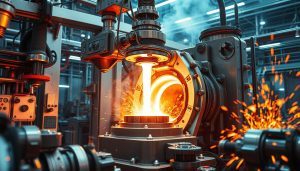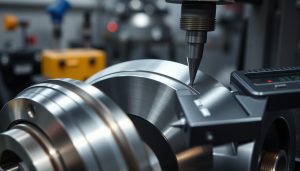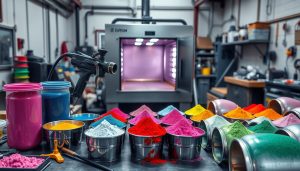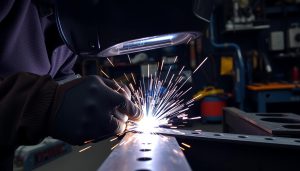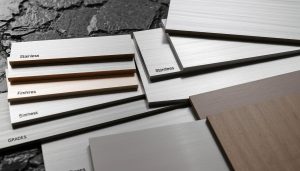The world of manufacturing has witnessed a remarkable transformation with the advent of precision cutting technologies, and laser cutting stands at the forefront of this revolution. This advanced cutting technique has become increasingly prevalent across a wide range of industries, revolutionizing the way products are fabricated and customized. In this article, we’ll explore the diverse types of laser cutting processes and delve into their remarkable applications that are reshaping the landscape of modern manufacturing.
What is Laser Cutting?
Laser cutting is an advanced manufacturing process that utilizes a laser beam technology to precisely cut or shape a wide range of materials. This non-contact cutting technique relies on the focused energy of a laser beam to vaporize and remove material, resulting in a clean and accurate cut with minimal material waste.
Overview of the Laser Cutting Process
The laser cutting process involves several key steps. First, a laser beam is generated, typically using either a CO2, fiber, Nd:YAG, or diode laser source. This beam is then focused and directed onto the material, where its concentrated energy melts, vaporizes, or burns through the material, creating the desired cut or shape. The process is often enhanced by the use of an assist gas, such as oxygen or nitrogen, which helps to eject the molten material and clear the cut path.
How Laser Cutting Works: The Role of the Laser Beam
At the heart of the laser cutting process is the laser beam technology. The laser beam acts as a tool, delivering a high-intensity, focused energy source that can precisely cut through a wide range of materials, including metals, plastics, and composites. The material removal occurs as the laser beam heats the material to its melting or vaporization point, allowing the cut to be made in a clean, non-contact manner.
“Laser cutting is a highly versatile and precise manufacturing process that has transformed the way we shape and cut materials.”
Types of Laser Cutting Processes
The world of laser cutting techniques is diverse, with a range of industrial lasers that cater to specific material-cutting needs. Understanding the unique characteristics and applications of each laser type is crucial for selecting the optimal solution for your project. Let’s explore the four primary laser cutting processes used in modern industries.
CO2 Laser Cutting
CO2 lasers are a popular choice for cutting a wide variety of materials, including metals, plastics, and wood. These industrial lasers are known for their high power output, making them suitable for thick or heavy-duty cutting tasks. CO2 laser cutting is particularly effective for processing materials like stainless steel, mild steel, and aluminum, delivering precise and clean edge finishes.
Fiber Laser Cutting
Fiber lasers have gained significant traction in the laser cutting techniques landscape due to their exceptional efficiency and precision. Leveraging the power of fiber optics, these lasers can deliver a focused, high-intensity beam that excels at cutting thin to medium-thickness metals with remarkable speed and accuracy. Fiber laser cutting is a popular choice for fabricating intricate parts and components from materials like steel, titanium, and copper.
Nd:YAG Laser Cutting
Nd:YAG lasers, named after the neodymium-doped yttrium aluminum garnet crystals that power them, are renowned for their versatility in material-specific cutting. These industrial lasers are particularly well-suited for cutting and welding a diverse range of metals, including stainless steel, aluminum, and titanium. Nd:YAG laser cutting is often used in precision-driven industries, such as automotive, aerospace, and electronics manufacturing.
Diode Laser Cutting
Diode lasers, with their compact size and energy-efficient operation, have carved out a niche in the laser cutting techniques market. These lasers excel at cutting and processing thin, non-metallic materials, such as plastics, fabrics, and thin wood or plywood. Diode laser cutting is a cost-effective solution for applications that require consistent, high-quality results without the need for extensive power consumption.
Each of these laser cutting techniques has its own unique advantages, making them suitable for different material-specific cutting requirements. Understanding the strengths and limitations of each laser type is crucial in selecting the right solution for your project, ensuring optimal performance and cost-effectiveness.

Applications of Laser Cutting
The versatility of laser cutting technology has made it an invaluable tool across a wide range of industries, from automotive and aerospace to electronics and medical device manufacturing. This advanced cutting process has revolutionized the way manufacturers approach material processing, offering a precise and efficient solution for a variety of applications.
Industries that Benefit from Laser Cutting
Laser cutting finds its applications in numerous industries, each leveraging its precision and speed to enhance their production capabilities. The automotive industry, for instance, utilizes laser cutting to fabricate intricate components, such as tailpipes, brake discs, and body panels, with exceptional accuracy. Similarly, the aerospace sector relies on laser cutting for the manufacture of aircraft parts, turbine blades, and other critical components that require superior dimensional control.
Materials Suitable for Laser Cutting
- Metals: Stainless steel, aluminum, titanium, and other alloys are commonly processed using laser cutting technology.
- Plastics: A wide range of thermoplastic materials, including acrylic, polycarbonate, and polyethylene, can be precisely cut with a laser.
- Wood and Composites: Laser cutting has also found applications in the processing of wood, wood-based materials, and composite structures.
Common Laser Cutting Applications: Metal, Plastics, and More
The versatile nature of laser cutting technology allows it to be utilized in the manufacture of a diverse array of products. From intricate automotive parts and aerospace components to precision-engineered medical devices and cutting-edge consumer electronics, laser cutting plays a crucial role in shaping the products that define our modern world.
| Industry | Application |
|---|---|
| Automotive | Tailpipes, brake discs, body panels |
| Aerospace | Aircraft parts, turbine blades, structural components |
| Electronics | Circuit boards, housings, casings |
| Medical | Surgical instruments, prosthetic devices, implants |

The remarkable versatility of laser cutting technology has made it an essential tool in the modern manufacturing landscape, enabling industries to push the boundaries of what is possible in terms of industrial applications, versatile cutting technology, and material processing.
Advantages of Laser Cutting
Laser cutting technology has revolutionized modern manufacturing, offering a host of advantages that contribute to efficient, cost-effective production and superior quality control. From its exceptional precision and speed to its remarkable versatility, the benefits of laser cutting are transforming the way industries approach their manufacturing processes.
High Precision and Speed
One of the standout features of laser cutting is its unparalleled precision. The laser beam’s ability to cut intricate shapes and patterns with remarkable accuracy ensures a level of detail and consistency that is crucial for many industries, such as efficient manufacturing. This high-precision cutting also translates to faster processing times, allowing businesses to streamline their cost-effective production and meet tight deadlines with ease.
Versatility and Minimal Material Waste
Laser cutting technology is remarkably versatile, capable of processing a wide range of materials, including metals, plastics, and even wood. This adaptability enables manufacturers to tackle diverse projects and products with a single system, maximizing the efficiency of their quality control processes. Furthermore, the laser’s precision results in minimal material waste, reducing costs and contributing to a more sustainable manufacturing approach.
“Laser cutting has revolutionized the way we approach manufacturing, allowing us to achieve unparalleled precision, speed, and versatility in our production processes.”
Choosing the Right Laser Cutting Process for Your Project
When it comes to laser cutting, selecting the optimal process for your project can make all the difference in achieving the desired results. Several key factors must be considered to ensure you choose the right laser cutting solution for your unique needs.
Factors to Consider: Material Type, Thickness, and Tolerances
The type of material you’re working with is a crucial factor in determining the most suitable laser cutting process. Different materials, such as metals, plastics, or composites, require specific laser wavelengths and power levels to achieve clean, precise cuts. Additionally, the thickness of the material plays a significant role in the selection process, as thicker materials may require higher-powered lasers or alternative cutting techniques.
Equally important are the tolerances required for your project. Laser cutting offers exceptional precision, but the level of accuracy needed will vary depending on your application. Factors such as the intended use of the final product, assembly requirements, and aesthetic considerations should all be taken into account when choosing the laser cutting selection that best aligns with your project requirements and ensures an optimal cutting solution.
| Material Type | Thickness Range | Suitable Laser Cutting Process |
|---|---|---|
| Mild Steel | 0.5 – 12 mm | CO2 Laser Cutting, Fiber Laser Cutting |
| Stainless Steel | 0.5 – 12 mm | CO2 Laser Cutting, Fiber Laser Cutting |
| Aluminum | 0.5 – 6 mm | Fiber Laser Cutting |
| Acrylic | 1 – 12 mm | CO2 Laser Cutting |
| Plywood | 3 – 12 mm | CO2 Laser Cutting |
By carefully considering the material type, thickness, and required tolerances, you can make an informed decision and select the laser cutting process that best meets the project requirements and delivers the optimal cutting solution for your needs.
Shixinproto’s Laser Cutting Services
At Shixinproto, we pride ourselves on being a leading provider of professional laser cutting services. Our advanced equipment and skilled technicians enable us to deliver custom manufacturing solutions for a wide range of industries and applications. Whether you’re in need of rapid prototyping or production-ready components, Shixinproto has the expertise to bring your vision to life.
Our laser cutting capabilities extend beyond the ordinary, allowing us to handle a diverse array of materials with unparalleled precision and efficiency. From intricate metal parts to delicate plastic components, we employ the latest technology to ensure every cut meets the most stringent quality standards. With a steadfast commitment to excellence, Shixinproto is your trusted partner in the world of professional laser cutting and custom manufacturing.
Explore the full breadth of our laser cutting services and discover how Shixinproto can streamline your next project. Our team is dedicated to providing tailored solutions that not only meet your requirements but also exceed your expectations. Experience the difference that our expertise and attention to detail can make in your manufacturing journey.
